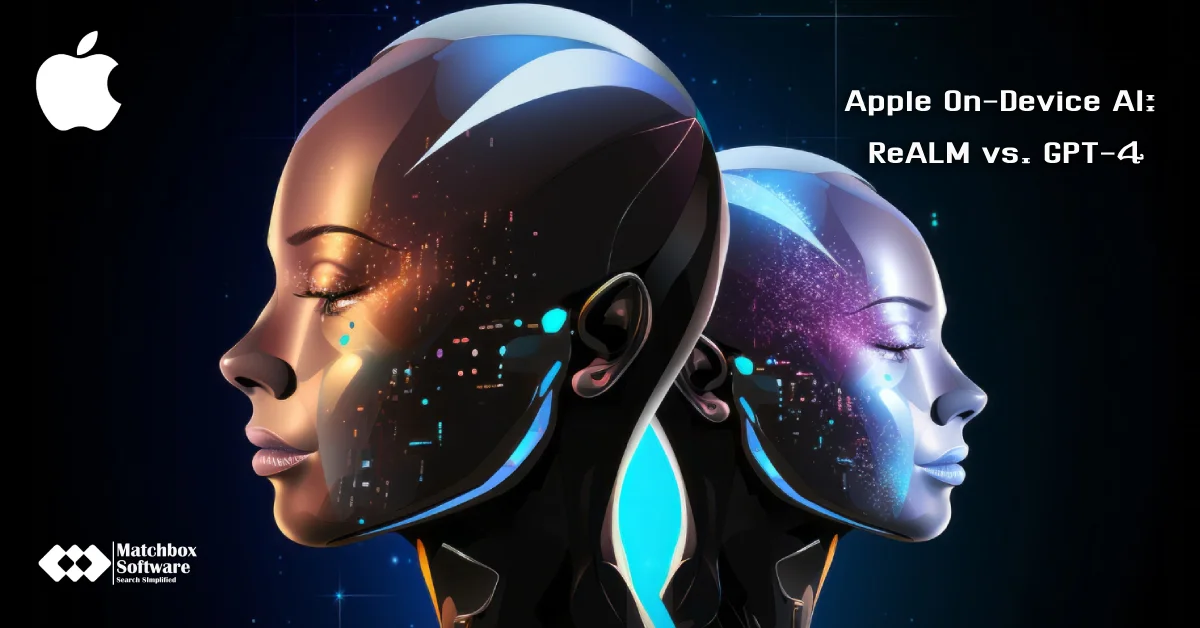Table of Contents
Introduction
In the ever-evolving landscape of artificial intelligence, two giants—Apple and OpenAI—have been battling it out to create the most powerful and versatile AI models. Recently, Apple made a bold claim: Apple On-Device AI model, ReALM (Reference Resolution As Language Modeling), outperforms OpenAI’s GPT-4. Let’s delve into this intriguing showdown.
The Context: Apple On-Device AI
Apple has faced its fair share of challenges in integrating AI with its voice assistant, Siri. Users have often expressed frustration with Siri’s limitations. However, Apple’s commitment to advancing AI remains unwavering. In a recent research paper, their AI experts introduced ReALM, a system designed to enhance the capabilities of voice assistants.
ReALM: A New Approach
ReALM takes a novel approach to improving reference resolution. Unlike traditional methods that focus solely on conversational context, ReALM considers both the content on the user’s screen and ongoing tasks. It categorizes entities into three types: on-screen entities, conversational entities, and background entities.
The Benchmarking Battle
Apple On-Device AI pitted ReALM against OpenAI’s ChatGPT 3.5 and ChatGPT 4.0. The results were intriguing. Even the smallest ReALM model performed comparably to GPT-4, while larger ReALM models substantially outperformed it. Specifically:
- On-Screen References: ReALM steps into the ring, achieving absolute gains of over 5% for on-screen references. It’s like ReALM has a built-in magnifying glass, meticulously analyzing every pixel on your device.
- Larger Models: Apple’s larger ReALM models enter the fray, towering over GPT-4. Their performance? Substantial. GPT-4, despite its impressive lineage, finds itself grappling with ReALM’s newfound prowess.
The Privacy Advantage
Apple’s commitment to user privacy shines through in ReALM’s on-device capabilities. By keeping the heavy lifting local, Apple avoids sending sensitive data to the cloud. Imagine Siri whispering secrets only to your iPhone, like a trusted confidante.
Siri’s Evolution
Remember the early days of Siri? She stumbled, misheard, and occasionally led us astray. But ReALM aims to change that narrative. Picture Siri as a seasoned detective, piecing together clues from your screen, your conversations, and even the background music playing during your candlelit dinner.
The Promise of On-Device Performance
Apple’s focus on on-device AI aligns with their commitment to user privacy and security. By achieving impressive results without sacrificing quality, ReALM aims to enhance Siri’s intelligence and usefulness. Imagine Siri remembering your conversation history, understanding what’s on your iPhone screen, and even recognizing background activities like music playing in the background.
What Lies Ahead
As we eagerly await World Wide Developers Conference(WWDC)c 2024, Apple’s annual developer conference, we hope to see more details about their AI plans. Will ReALM revolutionize Siri? Can it truly outshine GPT-4? Only time will tell. But one thing is certain: the battle between Apple and OpenAI is far from over.
In this clash of titans, ReALM emerges as a promising contender, ready to redefine how we interact with AI. So, whether you’re an Apple aficionado or an AI enthusiast, keep your eyes peeled for the next chapter in this enthralling saga.
Disclaimer: This blog is a creative exploration and does not reflect actual claims made by Apple or OpenAI. Any resemblance to real events is purely coincidental.
Frequently Asked Questions(FAQs):
Here are five frequently asked questions about Apple on-device AI model, ReALM, and its comparison with OpenAI’s GPT-4:
What is ReALM?
ReALM (Reference Resolution As Language Modeling) is Apple on-device AI system designed to enhance the capabilities of voice assistants. It goes beyond traditional image recognition by considering both on-screen content and ongoing tasks.
How does ReALM compare to GPT-4?
In benchmarking against OpenAI’s ChatGPT 3.5 and ChatGPT 4.0, ReALM shows promising results. Even the smallest ReALM model performs comparably to GPT-4, while larger ReALM models substantially outperform it.
What advantages does ReALM offer?
ReALM aims for on-device performance without compromising quality. Apple’s focus on privacy aligns with ReALM’s capabilities, allowing Siri to remember conversation history, understand on-screen context, and recognize background activities.
What types of references does ReALM handle?
ReALM categorizes entities into three types: on-screen entities, conversational entities, and background entities. It excels in resolving references, making Siri more context-aware and useful.
When can we expect ReALM to impact iOS?
While Apple has not confirmed specific timelines, the upcoming iOS 18 and WWDC 2024 may unveil further developments in ReALM and its integration with Siri.

